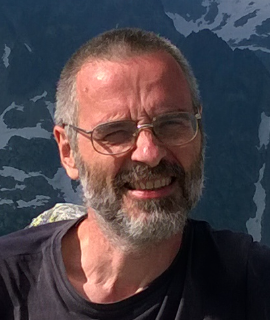Title : Roughness spectroscopy of particle monolayer: Implications for spectral analysis of the monolayer image
Abstract:
Surface roughness of particle monolayer is one of its fundamental characteristics, conventionally described in terms of power spectral density. First, we will discuss a general equation for this function and demonstrate its similarity to those applied in the theory of scattering. Specifically, it is a linear function of the squared form factor and static structure factor. The form factor is a Fourier transform of particle height profile and the structure factor is equal to the product of particle number density and Fourier transformed pair-correlation function, increased by one. The relationship suggests that roughness measurements of particle monolayers can be considered as a type of spectroscopy, in a wider sense of the term. Next, we will show that our approach can be generalized to virtually any monolayer image. Therefore, our results provide a framework for a quantitative, cheap, and easy method, based on statistical analysis of the digital monolayer image, for determining the particle pair-correlation function. The approach can be an attractive alternative to standard, expensive methods such as GISANS or GISAXS. The power spectral density provides also quantitative information on key parameters of the system: the particle radius, number density, and dimensions of analyzed area. Therefore, the theoretical model provides also a general framework for an automatic, potentially real-time parametrization of particle monolayers. Unlike in the methods currently used in image analysis, relying usually on individual particle identification, we do not have to localize each of the particles here. Instead, we just need to calculate the Fourier transform of the monolayer image and to least-squares fit the monolayer parameters. We will show that our analytical results are consistent with numerical ones derived for a system with parameters corresponding to typical experimental conditions. We will also demonstrate a practical application of our approach for spectral analysis of a monolayer image found in the literature.
Audience take-away:
- The audience will be able to use the gained knowledge for statistical analysis of particle monolayer images. After determining the power spectral density of monolayer images with a standard software package for image analysis, the audience will better understand the characteristic variation of the function. The participants will also be able to determine the structure factor and pair-correlation function of the particle monolayers.
- Our preliminary results will help the audience to expand their teaching and research in the field of charactarization of particle monolayers. With further ongoing development, the faculty will be able to use the novel approach for determining key parameters of particle monolayers, such as particle size or surface coverage. This simple method will allow the researchers to increase the accuracy and efficiency of the measurements.


